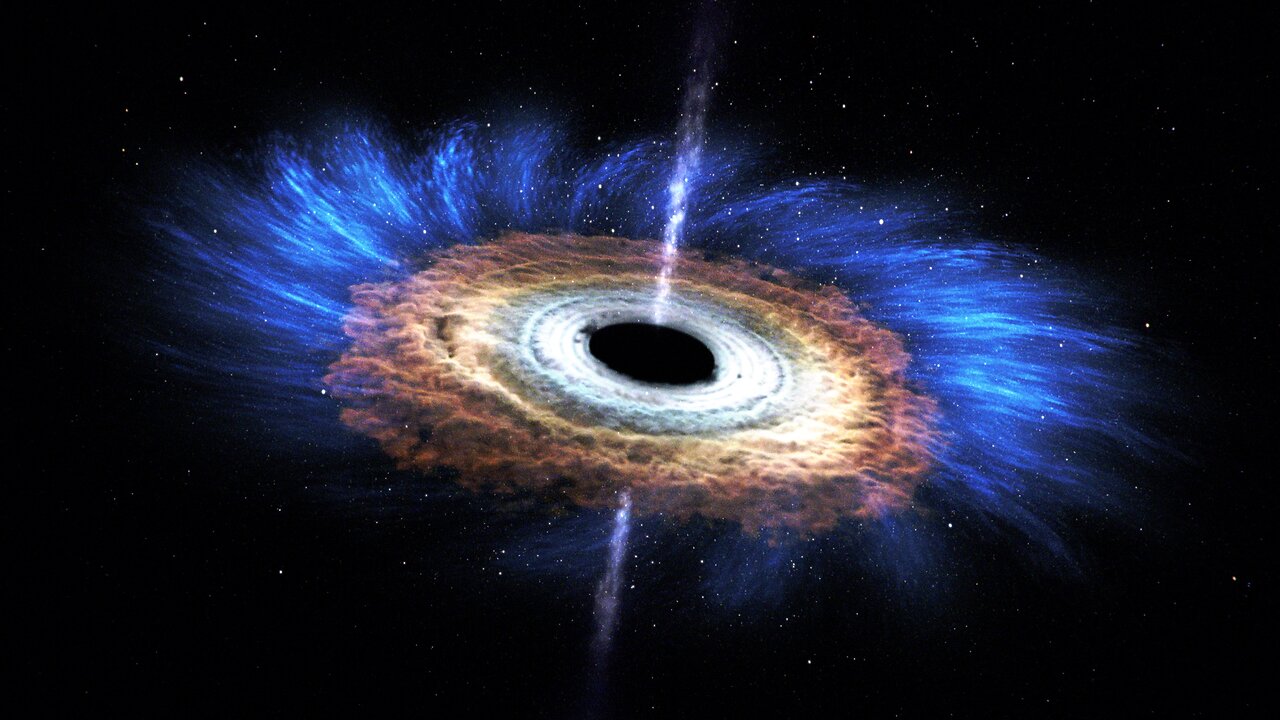Premium Only Content

Cosmic Drama Unveiled: When Black Holes Shred Stars
In this visual representation, we explore a remarkable cosmic phenomenon: when a star ventures too close to a black hole, the gravitational forces at play are so powerful that they tear the star apart. This extraordinary event, known as a "tidal disruption," unfolds in a dramatic manner. As the star gets too close to the black hole, it undergoes a process where some of its shattered remains are catapulted outward at incredibly high speeds, while the rest gets inexorably drawn towards the insatiable gravitational pull of the black hole. This dynamic interaction results in a unique X-ray flare that can persist for several years.
To unravel the mysteries surrounding such events, NASA's Chandra X-ray Observatory, the Swift Gamma-ray Burst Explorer, and ESA/NASA's XMM-Newton spacecraft have come together, each contributing essential pieces to the cosmic puzzle. Their combined efforts shed light on a particular tidal disruption event called ASASSN-14li. This event was initially discovered through an optical survey conducted by the All-Sky Automated Survey for Supernovae (ASAS-SN) back in November 2014. ASASSN-14li unfolded in the vicinity of a supermassive black hole, which is estimated to possess a mass several million times greater than that of our Sun. This cosmic drama played out within the heart of PGC 043234, a distant galaxy located approximately 290 million light-years away.
Astronomers are eagerly searching for more occurrences akin to ASASSN-14li. These events serve as critical testing grounds for theoretical models, allowing scientists to gain deeper insights into how black holes influence their surrounding environments.
During the course of a tidal disruption event, slender strands containing a significant portion of the star's mass plunge toward the black hole. Over time, these gaseous strands converge into a seamless, scorching-hot disk that radiates with intense X-rays. As this disk takes shape, its central region becomes extraordinarily heated, leading to the emergence of a powerful outflow of material known as a "wind," which streams away from the disk.
Credits
NASA's Goddard Space Flight Center.
Brian Monroe (USRA): Lead Animator
Scott Wiessinger (USRA): Lead Producer
Francis Reddy (Syneren Technologies): Lead Writer
Jon Miller (University of Michigan): Lead Scientist
-
 LIVE
LIVE
LFA TV
10 hours agoLIVE & BREAKING NEWS! | WEDNESDAY 10/22/25
9,648 watching -
 DVR
DVR
Chad Prather
9 hours agoHow To Live An UNSHAKEABLE Life!
14K12 -
 LIVE
LIVE
The Chris Salcedo Show
12 hours agoDems Only Like Violence Directed At Conservatives
1,038 watching -
 LIVE
LIVE
Welcome to the Rebellion Podcast
12 hours agoHappy Hump Day - Welcome to the Rebellion Podcast Live 10/22
205 watching -
 8:29
8:29
Freedom Frontline
14 hours agoFox News Analyst EXPOSES Obama and Hillary’s Dirty Secret
6.7K14 -
 21:34
21:34
Jasmin Laine
17 hours agoReporters STUNNED as Carney’s “No Deal Coming” LEAKS—Billboards EXPLODE Nationwide
15.9K28 -
 1:22:28
1:22:28
Crypto Power Hour
11 hours ago $1.69 earnedThe StableCoin Queen, Author, Cybersecurity Expert Alyze Sam
18.1K5 -
 18:56
18:56
Degenerate Jay
18 hours ago $0.95 earnedIs Silent Hill f Worth Buying?
11.5K2 -
 39:24
39:24
Uncommon Sense In Current Times
18 hours ago $1.01 earnedThe Curative Culture Model | Healing Workplaces & Leading with Humanity | Doug Shaw
15.3K1 -

BEK TV
23 hours agoTrent Loos in the Morning - 10/22/2025
10.3K